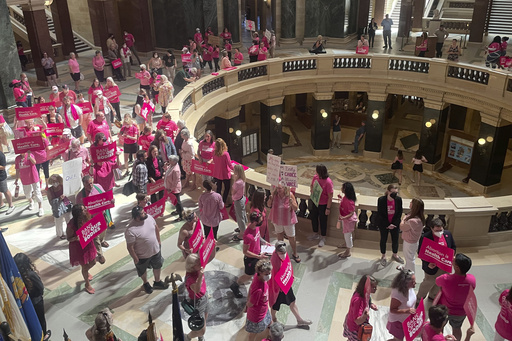
A significant campaign by advocates for abortion rights aimed at securing state supreme court seats resulted in varied outcomes during the recent elections. In Ohio, Republicans notably increased their majority on the court, while progressive-supported candidates found success in states like Montana and Michigan.
In North Carolina, one of the most closely examined and expensive supreme court races, a Democratic justice with a strong focus on abortion rights was in a tight contest to maintain her seat against a Republican challenger. As of Thursday, the race remained undecided, highlighting the intense stakes involved as Republicans sought to solidify their majority.
Both conservative and liberal groups invested heavily in these elections, striving to influence court decisions that could shape pivotal issues such as voting rights, redistricting, and abortion. Supporters of abortion rights celebrated wins in traditionally Republican states, interpreting these results as evidence that reproductive issues will become increasingly central in judicial elections, especially following the Supreme Court’s 2022 reversal of Roe v. Wade. In places like Montana and Arizona, local courts will soon need to interpret newly passed abortion-rights amendments and their impacts on current legislations.
Deirdre Schifeling, the chief political and advocacy officer for the American Civil Liberties Union, stated, “State Supreme Court judges don’t really weigh in on economic issues, but their influence on reproductive rights and voting rights affects the lives and liberties of citizens at the state level.” She emphasized the opportunity to define judicial elections around these critical matters.
The ACLU, in its efforts to protect reproductive rights, allocated $5.4 million towards campaigns in Montana, Michigan, North Carolina, and Ohio, while organizations like Planned Parenthood and the National Democratic Redistricting Committee also committed substantial funds to similar races in these states, as well as in Arizona and Texas.
Conservative groups matched these expenditures, although their advertisements concentrated on non-abortion topics such as immigration and public safety. In Ohio, all three Democratic candidates lost their respective races, resulting in a solidified 6-1 Republican majority, which had recently overturned the state’s six-week abortion ban and is expected to review further regulations.
Ohio Republican leaders heralded the election results as a clear message supporting their control of the court for the foreseeable future. Meanwhile, in Michigan, Democrats successfully elected two new members to the state’s Supreme Court, now holding a 5-2 majority, securing values they assert are under threat from extreme Republican ideologies.
The situation unfolded differently in North Carolina, where Justice Allison Riggs was trailing behind Jefferson Griffin in a contentious race for an eight-year term. The race had counted nearly 5.5 million ballots, with many provisional and absentee ballots still pending review, leaving the outcome uncertain and open to a potential recount depending on final margins.
In Montana, the races were a divided result; county attorney Cory Swanson won against former U.S. Magistrate Judge Jerry Lynch for the chief justice position, while state judge Katherine Bidegaray defeated fellow state judge Dan Wilson for another court seat. Supporters of Lynch and Bidegaray framed their candidacies as essential for preserving abortion rights amidst a Republican-dominated legislature.
In Texas, a campaign to unseat three justices from the fully Republican Supreme Court did not succeed, with incumbents winning reelection despite their previous rulings against abortion access. Conversely, in Arizona, two justices retained their positions, despite efforts to remove them due to a controversial ruling that allowed the enforcement of a long-ignored 1864 ban on most abortions.
Conservative victories were also seen in Oklahoma, where one of the three Supreme Court justices, previously appointed by a Democratic governor, faced removal from office. This action followed a court ruling that overturned part of the state’s almost complete abortion prohibition. Additionally, an Arkansas justice known for dissenting against restrictions on abortion rights was elected to the chief justice position, though this will not alter the court’s majority.
Looking ahead, Wisconsin’s upcoming elections are anticipated to be another critical battleground for judicial power, particularly about maintaining a liberal majority on the court amid the backdrop of increased campaign spending seen in recent years.
Analysts suggest that the current landscape of state supreme court elections is unlikely to revert to the patterns observed a decade ago, indicating a new era of heightened involvement and financing in judicial races.

